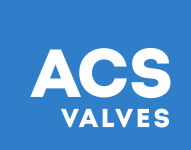
Sure, superheroes don’t need a trusty sidekick to save the day, cowboys don’t need a gutsy horse to wrangle outlaws, and maybe Inspector Gadget doesn’t really need a set of collapsible helicopter blades inside his hat — but let’s face it, those extras make their jobs a whole lot easier.
The same goes for rotary valves. No, hear me out. Sure, your valve works great on its own, but there may be additional features and accessories you could use to optimize its performance.
In the manufacturing world, your typical bad guys are downtime and wasted money. You can’t fight them on horseback, but you can certainly make sure your rotary valves are equipped to last longer, work more efficiently and save you money in the long run. Take a look at our top suggestions.
Zero Speed Switch Assembly
Although it’s often overlooked, the Zero Speed Switch Assembly can save your rotary valve from serious issues. When installed on a valve and wired back to your programmable logic controller (PLC) system, the speed switch monitors shaft rotation to make sure your valve is running efficiently. If the shaft stops rotating, the switch will send a signal to the PLC and set off an alarm.
This helps from an efficiency standpoint, ensuring that production is running on a consistent basis, and it can also prevent more serious problems. If a valve stops rotating, it may back up and create issues with other equipment — and even plug the conveying line itself. The speed switch will quickly alert you to any potential issues and help you keep the line running smoothly.
Vent Port
Thanks to the pneumatic conveying line below your valve, air can sometimes leak into the empty side of the valve as it rotates back up, causing pressurized air to build up in the rotor pockets. This pocket air causes the valve to keep rotating without taking in as much material as it should.
When you have a pressure line below your rotary valve, a vent port is critical. The vent port is essentially drilled into the valve’s housing to release the built-up air and relieve pressure. Put simply, that means your valve can keep conveying at maximum capacity without wasting time or material.
Tungsten and Chrome Coatings
It’s always important to choose the right coating for your application, but when you’re conveying rugged or abrasive materials, your coating choice is key. These materials can create a “sandblasting” effect inside the valve. Without the right coating on the housing interior and end plate, the valve’s surfaces can get worn down quickly, reducing its lifespan.
Coatings do add cost to your valve, but they provide a greater overall return on your investment. The right coating can add another year or two to your valve’s lifecycle, extending its value instead of forcing you to spend another several thousand dollars prematurely installing a new valve.
We generally recommend a hard chrome coating for lightly abrasive materials like sugar. Heavy plate chrome is best for moderately abrasive and corrosive materials like cement. Choose tungsten for highly abrasive materials like silica sand.
Are you fully equipped?
There are plenty of different valve configurations to help you get more bang for your buck. Check out an accessory guide here or contact an ACS representative to start customizing your next order.


